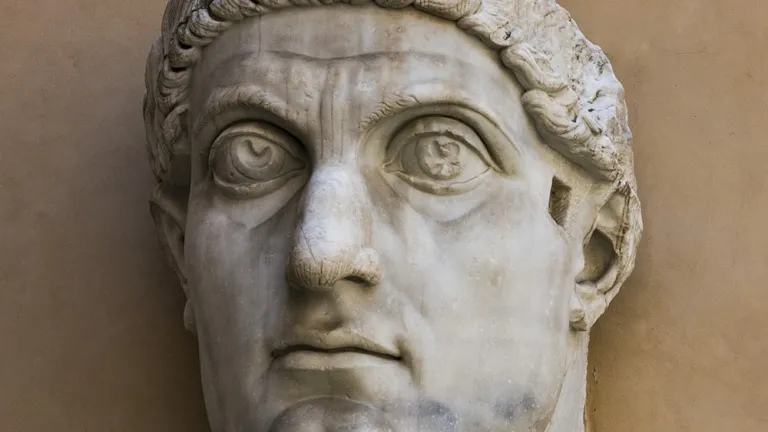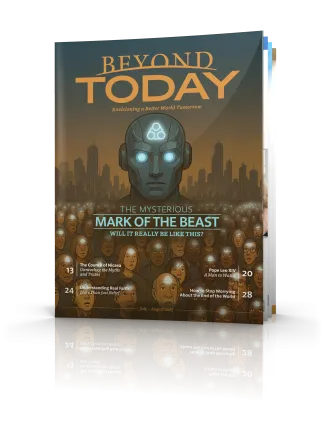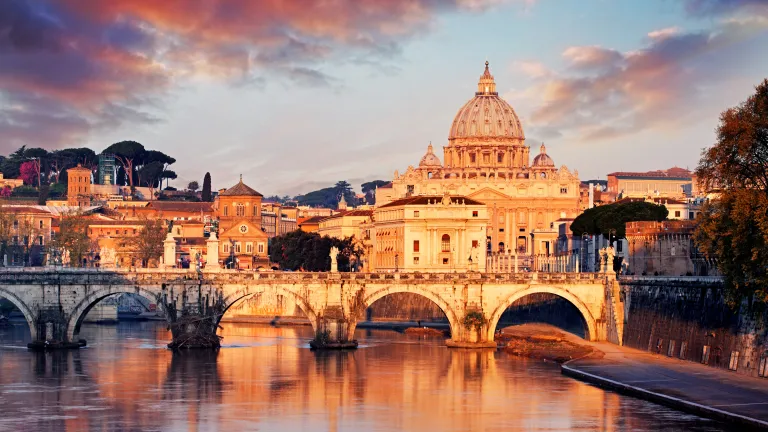Back to Nicaea: The Church-State Beast Arises

What began 1,700 years ago at the Council of Nicaea still shapes global religion and politics today—with prophetic consequences. Discover how the union of church and state, foretold in Daniel and Revelation, laid the foundation for a powerful system that will rise again in the final days—and why you must be spiritually prepared to resist it.
It was 1,700 years ago this summer that the famous Council of Nicaea was held in an attempt to unify the Christian religion as cultural glue for the empire of Roman Emperor Constantine the Great. We look in this issue at what came out of that and succeeding meetings and the broader implications—as the leaders of Christendom return there in commemoration to promote unity.
While Constantine professed Christianity, he remained a pagan sun devotee until his deathbed conversion—which was followed by his burial in the Church of the Holy Apostles as the supposed “Thirteenth Apostle”! The sudden exaltation during his reign of the religion labeled as Christianity, following a long period of state persecution, was a strange development. Author Adrian Hilton wrote in his 1997 U.K. bestseller The Principality and Power of Europe:
“Many believers puzzled over this new order. For nearly three centuries they had waited for the return of Jesus Christ as king and deliverer, the fall of Rome, and the triumph of the Kingdom of God. Curiously, no prophecy had foretold a popular growth and universal acceptance of the Church. They saw prophecies of persecution and suffering, but nowhere was the Church of Christ prophesied to become great and powerful in this world . . .
“It was not until Constantine began [or formally promoted] a process of syncretism that Christians began to understand the nature of the beast which was evolving. The Saturday Sabbath was replaced by Constantine’s edict forbidding work on ‘the venerable day of the sun’ (Sunday), and the celebration of the Passover was declared illegal—on pain of death. It was replaced by [what was later known in English as] ‘Easter,’ celebrated on a Sunday and inherited from a Babylonian cult to the goddess Ishtar. The Roman pseudo-Christianity caused many faithful believers to flee into the mountains of Europe and Asia Minor to escape persecution and death, and there they continued, away from the world’s view, as the true Church of Christ.
“The majority of Christians, however, were awed by the universal influence of the new unity . . . Many believers began to wonder if they had not misunderstood the concept of the kingdom of God—it might have been the Church itself, or even the christianised Empire. Thus the fateful union of Church and State was ratified—a union that was to shape the evolution of Europe for centuries to come” (pp. 25-26, emphasis added throughout).
Indeed, after Rome’s fall came a series of revivals of what history calls the Holy Roman Empire—led by a powerful political ruler and a great religious ruler. Hilton was right to call this system an evolving beast—for the system was in direct fulfillment of prophecies God gave in the books of Daniel and Revelation about an emerging Beast power in partnership with a false Christian religious system. Yet the greatest fulfillment of these prophecies, their culmination, will come in the years soon ahead of us.
Our last issue of Beyond Today dealt with a shift in European politics, which will ultimately bend in this direction. We are not there yet, but the time will come when a new political strongman and great religious leader will arise to lead the world into the final events of this age. This Beast system, as we explore in this issue, is described in Revelation as imposing a mark on people’s right hands or foreheads denoting allegiance and compliance. Many have wondered over the nature of this mark, especially now with the increase of electronic surveillance, including through artificial intelligence. But is that what the mark is? As we lay out in our cover story, it’s not what many envision—though its final implementation could involve some kind of technological enforcement. In fact, it has a great deal to do with the church-state relationship that emerged from the imperial church councils—a political and religious tyranny that has dominated Europe and much of the world so often through the centuries.
And such tyranny will return amid desperate times. The early formation in the late 1940s of what eventually became the European Union recognized the need for strong leadership. Paul-Henri Spaak, former Belgian prime minister and president of the Consultative Assembly of the Council of Europe, expressed that need in ominous terms: “We do not want another committee. We have too many already. What we want is a man of sufficient stature to hold the allegiance of all people, and to lift us out of the economic morass in which we are sinking. Send us such a man and, be he god or the devil, we will receive him” (quoted by Hilton, p. 22).
Yes, at some point they will. The question is: Will you? God warns against receiving the mark of this system, and He commands that we come out of it (Revelation 14:9-12; 18:4). While we watch events unfold in the world around us, let’s be sure to keep watch on ourselves—to make sure we remain in line with the ways of God through Jesus Christ in all we believe and practice.




